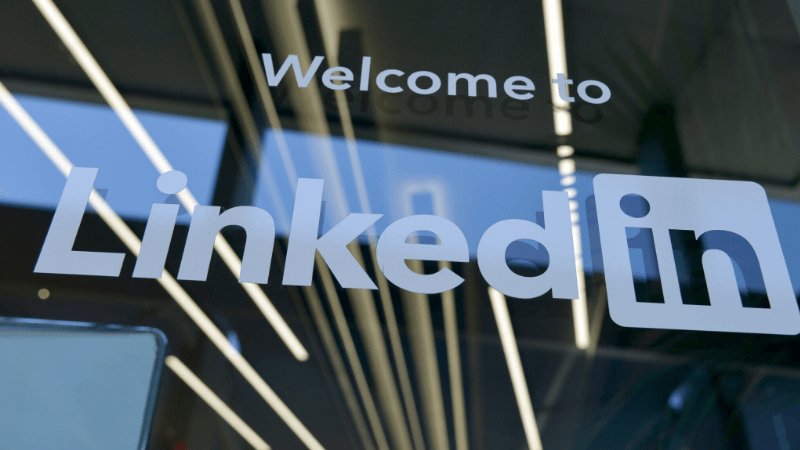Leveraging LinkedIn To Help You Land Your Dream Job
4th May, 2020 5 minutes
LinkedIn is the world’s largest professional network with over 690m users. It is also used by an estimated 95% of recruiters to find talent. But are you really making the most of what this platform has to offer? With a hire made every 10 seconds how can you leverage LinkedIn to stand out and help you land your dream job?
We know that starting a job search can be incredibly daunting and selling yourself is cringeworthy (at the best of times!), so we’ve compiled everything you need to know wrapped up in 13 handy tips to make your LinkedIn profile shine and get yourself noticed!
1. Complete your profile
Your LinkedIn profile is one of the most important aspects of your job search and is much more than just an online version of your CV.
Complete profiles rank higher in LinkedIn searches and make it easier for recruiters to find you, so make sure you spend time making your profile awesome and gain ‘all-star’ status. LinkedIn helps you out here by measuring the completeness of your profile and gives you recommendations on how to make it even better.
Before making any changes to your profile, make sure you turn off the notifications LinkedIn sends your network in the ‘how others see your LinkedIn activity’ section in your Settings to keep your changes private.
2. Put a face to the name
Add a clear headshot without a busy background (avoid selfies and photos with your mates down the pub). First impressions count and your profile photo is the first thing connections, recruiters and potential employers will see. Your photo will also build trust.
Are you looking for a new challenge? Check out our latest opportunities here.
3. Choose a cover photo
Express your professional identity and set yourself apart by adding a cover photo to your profile. LinkedIn recommends using an image size 1584 x 396 px.
4. Customise your URL
Customise your profile link (ideally it should be linkedin.com/yourname) so it is easy to read and share, then make sure to add it to your CV to make it easy for recruiters to find your profile. Customise your URL by clicking on ‘Edit public profile & URL’ in the top right corner of your profile.
5. Sell yourself with a compelling headline
Your headline is your chance to brand yourself in 120 characters and should be eye-catching to stand out. Sell the benefits of what you do not just your job title.
6. Get found easily
Include your contact details. It may sound obvious, but many people actually forget to do this. Next, add your location. If you’d like to be found for opportunities closer to home set your location to be where you live instead of where you work
The ‘Show recruiters, you’re open to job opportunities’ feature is great if you’re actively looking for a job. Enabling this feature will mean recruiters can find you more easily and you can specify what type of opportunities and location you are looking for.
Don’t worry about your current boss finding out, you can choose whether everyone on LinkedIn or just recruiters can see your status. LinkedIn Recruiter users who work at your current company and related companies will not be able to see your career interests and you can easily disable this feature at any point.
7. Bring your career story to life
Give your About section some love and outline the most relevant skills for the jobs you want but avoid these common buzzwords. Ideally, this section will be 3-5 short paragraphs long and can include bullet points. What are you passionate about? What key skills do you have and which industries have you worked in? What makes you different from others? Show your personality here and let people get to know you.
With rich media you can turn your profile into a portfolio and show potential employers your projects rather than just write about them. Take advantage of the 'featured content' section at the top of your profile where you can feature status updates, articles you’ve published on LinkedIn, documents, photos, presentations or links to web content such as blogs and videos.
Add your positions and highlight your achievements and wins for each role. LinkedIn will now automatically visually group different positions you have held within the same company, showing your progression. What did you do, what was the result and who did it impact? Include stats where you can as well as keywords that are relevant to your skills. A good rule of thumb is to have two paragraphs for each role, outlining your role and responsibilities in the first and briefly outlining the organisation in the second. You can also add media and links for each position or simply add a link to the company’s website.
Always include a current position even if you’re currently unemployed, so you aren’t left out of recruiter’s searches that usually only cover current roles to get the most recent and relevant candidates. Create a ‘dummy’ job position with the title you are looking for making it clear that you are ‘Looking for New Opportunities’ in the company name box.
Do you speak different languages? Make sure to add them to your profile in the languages section.
Add skills and ask people you have worked with to endorse you for them. Alternatively, you can choose to add your skills but opt out of being endorsed for them or even better, use the new LinkedIn skills assessment.
This feature tests your knowledge of a particular skill with 15-20 multiple-choice questions. You can find this in the skills section of your profile, and it is currently available for tech, business and design skills. If you pass the test, you get a certificate you can display on your LinkedIn profile. If you don’t pass, your results will remain private. According to LinkedIn data, candidates who completed these skill tests successfully were 30% more likely to get hired than those who didn’t.
Ask previous employers or colleagues for recommendations. These testimonials are more valuable than skills endorsements and help paint a picture of you and your work. Don’t be afraid to ask them to mention certain skills or a project you worked on with them. Another great way of getting recommendations is asking for them right after someone has praised you for doing a great job on work you completed recently. You can ask for recommendations from your profile in the recommendations area.
Add any volunteering roles, accolades, awards and degrees.
8. Search for that dream job
LinkedIn’s job search feature is a great place to start to search for relevant jobs and set up email job alerts for your searches. You can do this using the jobs function or if it is a specific company you want to keep up to date with, navigate to their company page, click to see all jobs and then enable the alert. Doing this will also inform their recruiters that you are interested in working at their company. LinkedIn also helps keep track of your saved and applied-to jobs so you can keep on-top of them more easily.
Browse our latest jobs and set up custom email alerts from Understanding Recruitment here.
9. Do your research
Have an interview or an important meeting coming up? Company pages are also a great information source that’ll help you prepare for your interview.
Make sure you know who you’re meeting and check them out on LinkedIn (if you don’t want them to see you’ve looked at their profile you can set yourself to anonymous in the settings, just remember to switch this back or you won’t be able to see who’s looked at your profile anymore).
Follow companies you are interested in to stay up to date with their plans and see when they are hiring.
10. Want advice from the experts?
Join LinkedIn’s Career Advice feature to get career advice by conversing with other LinkedIn users who are leaders in their field. This feature can be accessed from your LinkedIn profile.
11. Are you asking for the right salary?
LinkedIn also has a Salary Insights feature that enables you to see how your salary compares to others in the community by job title and location based on information provided by employers. This feature can also be accessed from your profile and is free of charge.
12. Keep learning
LinkedIn Learning is free for the 1st month and offers an array of learning resources to help you brush up on your skills.
13. Embrace interaction
LinkedIn is an interactive platform so use it as such and regularly update your status at least once a week. Share interesting articles from 3rd parties or ones you’ve written yourself and like, comment on or share other people’s stuff too. If you really want to get serious about posting content regularly then you may want to use a scheduling tool for your updates such as the free version of Hootsuite.
Writing an article on LinkedIn can be a great way to share your knowledge, build your personal brand and position yourself as a thought leader.
Mention others in your post and tag them (when relevant otherwise it’s just weird) to build engagement and reach a wider audience.
You can also follow hashtags so you see content relevant to you or to explore new industries you might want to move into. To set these up, type in # followed by what you’re looking for into the search bar at the top, then click on follow to see updates in your feed.


